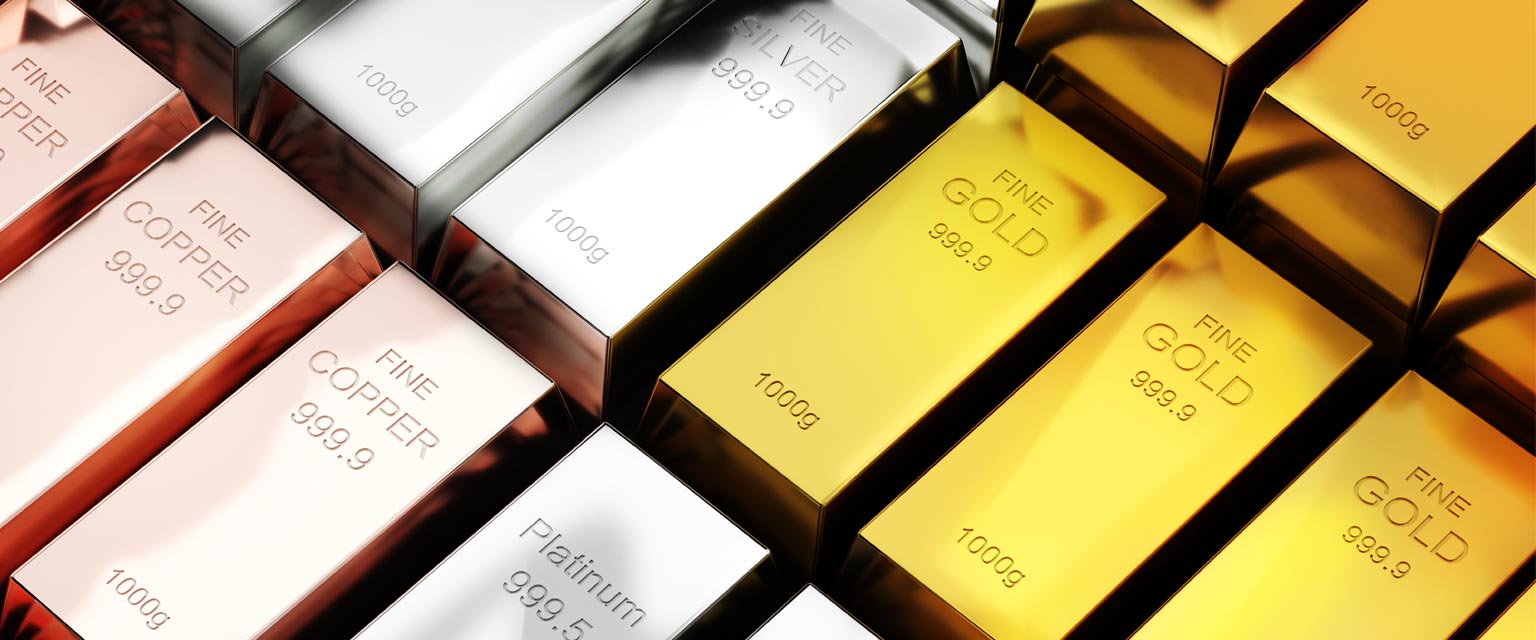For centuries, precious metals have held immense value in human civilization. Whether used as currency, jewelry, or investment assets, these rare metals have been sought after for their scarcity, durability, and financial stability. Unlike paper currency, which can fluctuate with economic changes, precious metals retain their intrinsic value, making them a reliable store of wealth.
Investors and collectors alike turn to these metals for portfolio diversification and protection against inflation. Gold, silver, platinum, and palladium are among the most commonly recognized, but there are other valuable metals that play significant roles in industry and investment.
At CV Coins & Collectables, we specialize in buying and selling rare coins, bullion, and collectibles in Chula Vista, San Diego County. With over 50 years of expertise in numismatics and precious metals, we guide collectors and investors in making informed decisions. Whether you’re looking to invest in bullion or expand your collection, understanding the precious metals list is crucial for identifying the best options for your financial goals.
In this comprehensive guide, we’ll explore the most valuable types of precious metals, their unique properties, and why they remain highly sought after worldwide.
What Are Precious Metals?
Precious metals are rare, naturally occurring metallic elements that hold high economic value due to their scarcity, durability, and diverse applications. Unlike common metals, these elements are resistant to corrosion and oxidation, making them ideal for long-term storage, industrial use, and investment portfolios.
Key Characteristics of Precious Metals
- Rarity – Precious metals are found in limited quantities, making them valuable. Their scarcity drives demand and increases their worth over time.
- Durability – Unlike base metals, precious metals do not easily corrode or tarnish, making them ideal for jewelry, coins, and long-term investment.
- Malleability & Conductivity – These metals are highly malleable and excellent conductors of electricity, making them essential in electronics, aerospace, and medical industries.
- Intrinsic Value – Unlike fiat currency, which is subject to inflation, precious metals maintain their value globally, making them a trusted hedge against economic instability.
Uses of Precious Metals
Precious metals serve multiple purposes, including:
- Investment & Wealth Preservation – Gold, silver, and platinum are commonly used for hedging against inflation and diversifying investment portfolios.
- Jewelry & Ornaments – Their durability and luster make them a preferred choice for fine jewelry and decorative items.
- Industrial & Technological Applications – Silver and platinum are widely used in electronics, medical equipment, and renewable energy solutions.
- Numismatics & Collectibles – Rare coins and bullion bars made from precious metals hold historical and collector value beyond their metal content.
Understanding these properties is crucial for investors and collectors alike. As we dive deeper into the precious metals list, you’ll discover which metals provide the best long-term value and investment potential.
The Precious Metals List: Most Valuable Types
Precious metals come in various forms, each with unique characteristics, investment potential, and industrial applications. The most valuable and widely recognized metals include gold, silver, platinum, palladium, and rhodium. These metals have long been sought after for their intrinsic value, historical significance, and practical uses.
Whether you’re an investor, collector, or simply curious about the market, understanding each metal’s properties and market trends is essential. Below, we’ll explore the precious metals list in depth, highlighting their importance, common uses, and investment opportunities.
Gold: The Timeless Standard of Wealth
Gold has been the most well-known and sought-after precious metal for centuries. It has played a vital role in monetary systems, jewelry, and investment portfolios, making it a cornerstone of wealth preservation.
Why Gold Holds Its Value
Gold is prized for its scarcity, durability, and resistance to tarnish or corrosion. Unlike paper currency, gold has intrinsic value, meaning its worth is not dependent on government backing. It has been used as a currency standard for centuries, and many investors view it as a hedge against inflation and economic instability.
Common Uses of Gold
- Investment & Wealth Preservation – Gold bars, coins, and ETFs provide a secure way to store value.
- Jewelry & Ornaments – Nearly 50% of global gold demand comes from the jewelry industry.
- Electronics & Technology – Gold is an excellent conductor and is used in circuit boards, connectors, and medical devices.
- Dentistry & Medicine – Gold is biocompatible, making it ideal for dental fillings and surgical implants.
Gold Investment Options
Investors have several ways to buy and store gold, including:
- Gold Bullion – Bars and coins with 99.9% purity (24K), such as the American Gold Eagle or Canadian Gold Maple Leaf.
- Numismatic Coins – Rare collectible gold coins valued for historical significance and limited minting.
- Gold ETFs & Stocks – Exchange-traded funds (ETFs) and mining stocks provide liquid exposure to gold without physical ownership.
Gold Purity & Market Trends
Gold purity is measured in karats (K), with 24K being 99.9% pure. Other common types include 22K (91.6%) and 18K (75%), which are more durable due to added alloys.
Historically, gold prices have shown steady growth, particularly during economic downturns, making it a safe-haven asset for investors.
Silver: The Industrial & Investment Powerhouse
Silver is second only to gold in popularity but is more affordable and widely used in industry. It has a unique combination of conductivity, antibacterial properties, and malleability, making it essential in various fields.
Common Uses of Silver
- Technology & Electronics – Used in solar panels, batteries, and semiconductors due to its high conductivity.
- Medicine & Antimicrobial Applications – Silver’s antibacterial properties make it useful in wound dressings, medical instruments, and water purification.
- Jewelry & Silverware – Sterling silver (92.5% silver) is a popular choice for jewelry, cutlery, and decorative items.
Silver Investment Options
- Silver Coins & Bullion – Popular coins include the American Silver Eagle and Canadian Silver Maple Leaf.
- Junk Silver – Pre-1965 U.S. dimes, quarters, and half-dollars contain 90% silver and are valued for their historical and metal content.
- Silver ETFs & Mining Stocks – Offer an alternative to physical silver ownership for investors.
Market Trends & Affordability
Silver’s price is more volatile than gold, but it remains a strong investment for diversification. Due to growing demand in renewable energy and technology, silver continues to be a crucial industrial metal with long-term investment potential.
Platinum: The Rarity with Industrial Strength
Platinum is far rarer than both gold and silver, making it highly valuable. It is widely used in automotive, medical, and jewelry industries, and its price often fluctuates due to supply constraints and industrial demand.
Key Uses of Platinum
- Automotive Industry – Essential in catalytic converters, which reduce vehicle emissions.
- Medical Instruments & Dentistry – Used in pacemakers, dental fillings, and chemotherapy drugs due to its biocompatibility.
- Luxury Jewelry – Platinum is a popular metal for engagement rings and high-end watches.
Investment in Platinum
- Platinum Bullion & Coins – Includes the Platinum American Eagle and South African Platinum Krugerrand.
- Platinum ETFs & Futures – Allows investors to gain exposure without holding physical platinum.
Market Trends & Volatility
Platinum prices are more volatile than gold and silver, mainly due to fluctuations in automotive demand and mining supply, making it a riskier but potentially high-reward investment.
Palladium: The Rising Industrial Metal
Palladium is often overlooked compared to other precious metals, but its value has surged due to high demand in automotive and industrial applications.
Common Uses of Palladium
- Automotive Industry – A critical component in catalytic converters, where it helps reduce vehicle emissions.
- Electronics & Fuel Cells – Used in hydrogen fuel technology and various electronic components.
- Jewelry & Alloys – Sometimes used as a gold alloy in white gold production.
Investment Potential
While less commonly held by investors, palladium is available in bullion bars and coins, with demand rising as automotive regulations tighten worldwide.
Market Trends
Palladium’s price has outperformed gold and platinum in recent years, making it a high-value industrial metal. However, due to its reliance on industrial demand, it carries higher volatility risks.
Rhodium: The Most Expensive Precious Metal
Rhodium is the rarest and most expensive metal on the precious metals list. Its extreme scarcity and specialized industrial applications make it a high-risk, high-reward investment.
Uses of Rhodium
- Automotive Industry – Essential in catalytic converters, like palladium and platinum.
- Industrial Applications – Used in electrical contacts, optical instruments, and chemical catalysts.
- Jewelry Coatings – Often plated over white gold and silver to enhance durability and shine.
Investment Risks & Market Trends
Rhodium’s price is extremely volatile, often fluctuating thousands of dollars per ounce due to limited supply and niche demand. It is not commonly available as an investment metal, making it a less accessible but highly valuable asset.
Why Invest in Precious Metals?
Investing in precious metals has been a reliable strategy for preserving wealth for centuries. Unlike fiat currency, which can lose value due to inflation or economic instability, metals like gold, silver, platinum, palladium, and rhodium maintain intrinsic value over time. Here’s why they make an excellent addition to any investment portfolio:
1. Hedge Against Inflation
One of the biggest reasons investors turn to precious metals is their ability to act as an inflation hedge. When the value of paper money declines, gold and silver tend to retain or increase in value. Historically, gold prices rise during periods of economic uncertainty, making it a safe-haven asset.
2. Diversification & Risk Reduction
A well-balanced investment portfolio should include a mix of asset types. Precious metals provide diversification, reducing risk by offering stability even when stocks and bonds fluctuate. Because they are not directly correlated with traditional financial markets, they serve as a protective buffer against economic downturns.
3. Tangible Wealth
Unlike stocks or digital investments, precious metals are physical assets that you can hold, store, and trade. This means you don’t have to rely on banking systems or online platforms to access your investment.
4. High Industrial Demand
Beyond investment, precious metals have essential industrial applications in technology, medicine, and renewable energy. The demand for silver in solar panels, platinum in medical devices, and palladium in automotive manufacturing ensures that these metals remain valuable.
Adding metals from the precious metals list to your portfolio provides both financial security and long-term growth potential.
How to Buy and Sell Precious Metals Safely
If you’re looking to invest in gold, silver, platinum, or other metals, it’s essential to buy and sell safely. The market has many reputable dealers, but also counterfeits and scams. Follow these guidelines to ensure secure transactions:
1. Research Reputable Dealers
Always purchase from a trusted source like CV Coins & Collectables in Chula Vista, a well-established dealer in authentic precious metals. Look for businesses with:
- Positive customer reviews and a strong industry reputation
- Transparent pricing based on market rates
- Certification and verification processes for authenticity
2. Verify Authenticity
Before buying, check for:
- Purity & Hallmarks – Gold and silver bars should have mint stamps indicating weight and purity (e.g., .999 fine silver, 24K gold).
- Serial Numbers – Some bullion and coins include unique serial numbers for tracking.
- Weight & Dimensions – Counterfeit metals often have incorrect weights or slightly off measurements.
3. Understand Pricing
The value of precious metals fluctuates daily based on the spot price (current market value per ounce). When buying or selling, consider:
- Premiums – Dealers charge a premium over the spot price for minting, distribution, and demand.
- Market Trends – Research historical price movements to time your purchase or sale effectively.
4. Avoid Scams & Counterfeits
Online scams are prevalent in the metals market. Protect yourself by:
- Avoiding deals that seem too good to be true
- Buying from licensed dealers instead of unverified sellers on eBay or social media
- Testing metals with a reputable expert if unsure of authenticity
By following these steps, you can safely invest in precious metals while maximizing your returns.
Conclusion
Investing in precious metals is a proven way to protect wealth, diversify assets, and hedge against economic uncertainty. Gold, silver, platinum, palladium, and rhodium each offer unique advantages, from investment security to industrial demand. Whether you’re a seasoned investor or just getting started, owning precious metals provides tangible, long-term value.
At CV Coins & Collectables in Chula Vista, we specialize in authentic, high-quality precious metals. Whether you’re buying or selling, our experts ensure a secure and transparent transaction.
Visit our shop today or contact us through our website for more expert insights on investing in precious metals.



